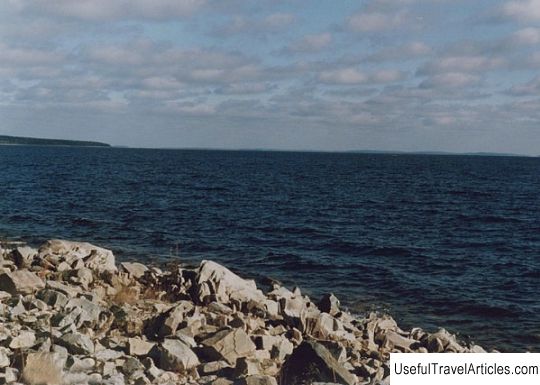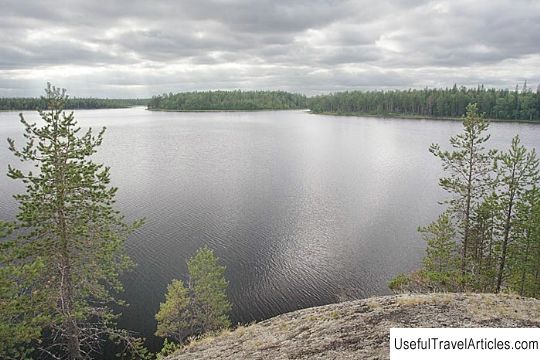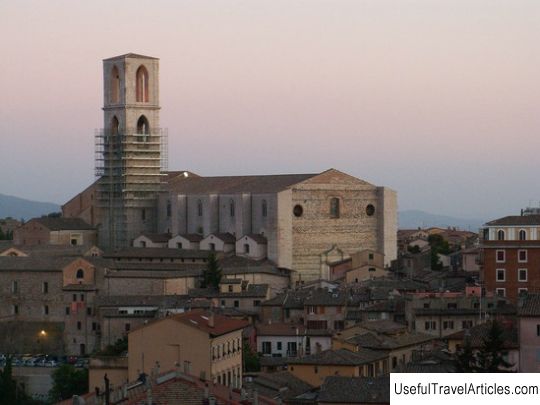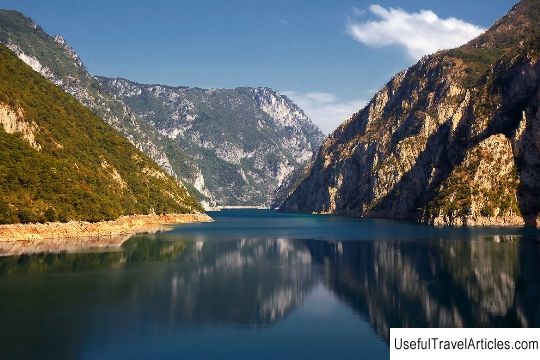Vygozero description and photo - Russia - Karelia: Segezha
Rating: 7,9/10 (1940 votes) 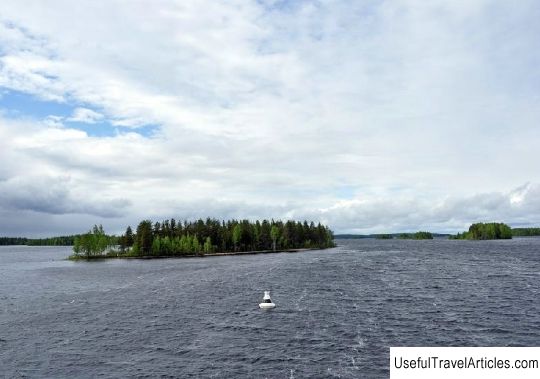
Vygozero description and photos - Russia - Karelia: Segezha. Detailed information about the attraction. Description, photos and a map showing the nearest significant objects. Photo and descriptionVygozero or Vygozerskoye reservoir is the largest freshwater lake in the Karelian Republic after Onega and Ladoga lakes. On the map, Vygozero can be seen as a blue spot with a heavily indented coastline that forms numerous bays and capes. The area of the lake at the moment is 1159 sq. km, but before the creation of the reservoir, the territory occupied by it was almost two times less. The increase in the size of the lake was achieved during the construction of the White Sea-Baltic Canal, as a result of which the water level in the reservoir rose by 7 m, which led to flooding coastal areas, while greatly changing the hydrological regime of the lake. A huge amount of mineral and organic substances came from the flooded area: floating peat bogs, herbaceous and woody debris, eroded soil. Fishing areas have been relocated, and the habitats of many animals and birds inhabiting the coastal areas have changed. Vygozero stretches from northwest to southeast and is divided into large bays and separate areas. The Vygozerskoe reservoir cannot be called deep, because its average depth is 6.2 m; maximum - 24 m. Several large tributaries flow into the lake - Vozhma, Verkhniy Vyg, Onda, Segezha; the Northern Vyg river flows out of the lake. In addition, a considerable number of islands are scattered throughout the lake. It used to be thought that the lake has about "as many islands as there are days in a year" - 529, but in fact the number of islands is 259, and they occupy an area of 126 sq. Km. Most of them are in the northern part of the reservoir. As for the coastal area, it is mostly rocky and rocky-sandy shores. Higher shores are characteristic of the northern regions of Vygozero, while in the southern regions low shores prevail. There are places on the coast that are almost completely swampy, but to a greater extent the coastal zone is covered with forest. Due to the fact that Vygozero is a shallow body of water, in autumn you can observe rapid cooling of water, and in summer lake water warms up especially quickly. Naturally, in the southern part of Vygozero, all processes are more intensive. The opening of the lake occurs in mid-May, but freezing takes place for a rather long time - almost the entire November. The water of the reservoir is distinguished by a considerable content of humic substances; the northern part of Vygozero is exposed to waste from a pulp and paper mill. There are 11 fish species in the Vygozero reservoir: whitefish, salmon, vendace, pike perch, perch, bream, pike, roach, ruff, burbot and ide. There are also several species of perch: slow growing, small and large, which lives in the deep-water areas of the lake. The places of especially mass concentration of large species of perch are located in the southwestern region, not far from the island of Sigovets, in the bays of Torkova, Puksha and Monoruba. Fish spawning takes place on ludas. In the lake, you can find specimens that weigh up to 600 grams. There are especially a lot of perch in the lake. Roach is more common in the southwestern region, as well as in the insular and southern regions of the lake. There are two groups of whitefishes in the lake, represented by lacustrine and lacustrine-river representatives. Vozhminsky whitefish is especially popular, which by the age of 10 reaches a weight of 1 kg. As already noted, the Segezha Pulp and Paper Mill operates on the banks of the Vygozero, which significantly affects the quality and purity of water, and, accordingly, fish. The entire amount of fish caught in the vicinity of the city of Segezha has a persistent specific smell. As you move away from the city, at a distance of 4-5 km from it, the smell gradually disappears, and the meat of the caught fish becomes quite suitable for human consumption. During the flooding, the lake water swallowed up an incredible amount of the surrounding forests. It is in this part of the snag that a wide variety of fish is found, to which, first of all, the pike perch belongs. In summer, the reservoir is rich in burbot, bream, vendace, roach and perch and pike.         We also recommend reading Myslewicki Palace (Palac Myslewicki) description and photos - Poland: Warsaw Topic: Vygozero description and photo - Russia - Karelia: Segezha. |
